- Bernard Preston homepage
- Stunting of children
- Stunting Story Ponders What Government Could Do
Stunting story ponders what government could do
This sixth and final part of the Stunting Story ponders what government could do to bring good food back to our children; currently much of schools provide is ultra-processed
Just half a glass of milk every day, two or three eggs per week and a handful of beans would wipe out kwashiorkor once and for all. A fruit daily, a helping of spinach and a whole starch like a yellow mealie or butternut would completely eradicate all hunger, malnutrition and stunting.
Is that too much to ask of government?
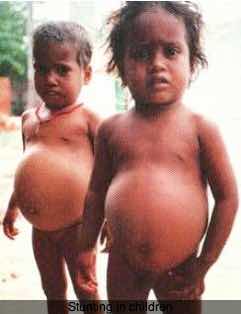
"Moving forward South Africa will need to adjust its current strategies and develop new ones if the country is to achieve its objectives of freedom and an improved standard of living and quality of life for all within a peaceful and stable society."
- Grace Grant
Fruit and nut trees for the indigent poor
If I was in government, I would set about having private companies growing vast numbers of fruit tree saplings; citrus, avocado and mulberry, for example. Cherry guavas and many others come into the reckoning too. Every indigent family that could provide a metre wide and deep hole would be given a plant to grow.
Commercial agriculture may grumble but the poor cannot afford to purchase their products in any case.
Preschool children too would then be catered for; permanent stunting has already set in by the age of five.
We have proved that it is simple to have fresh fruit every single day of the year from any ordinary green garden. The cape gooseberry is perhaps the easiest and bears monthly.
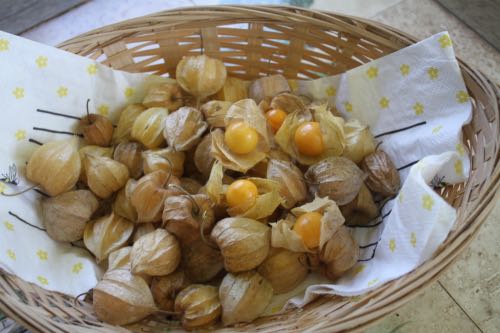 Cape gooseberries would help save children from stunting
Cape gooseberries would help save children from stuntingFood from local farmers
I would give local school committees the power to source food from the community. Dairy farms to supply milk, maas and green mealies; and other vegetables. Give them the power to source local products, particularly when there is a surplus.
Farmers are digging out their citrus trees and avocados are being buried in the ground because of a surplus. It’s a sin! The Minister of Education and distant billionaires have no control over such matters. There is a glut of macadamias. They could all profitably go to saving our children from stunting.
Children could be well fed; and the local farming community given a huge shot in the arm.
"Thousands of Gauteng pupils at no-fee schools found themselves without food and sent home as the province’s new R9bn nutrition programme got off to a chaotic start this week."
- TimesLIVE 13 April, 2025
If I was in government, I would give huge support to NGOs like Siyakhana Growth and Development. At three schools in Atteridgeville they have shown what can be done. Learners are taught how to plant and care for vegetables.
Teachers attest to pupils being able to concentrate better in class since food grown in their gardens was used to supplement that provided by the National School Nutrition Programme. Moreover, the learners take the tape measure, scale and jugs into the gardens with them.
Soon they are learning how to apply the mysteries from the classroom to real life, measuring the length of poles, the mass of butternut and volumes of water. Decimal fractions are best understood "on the job."
One teacher comments on how growing pumpkins is being used to keep the weeds in check. An inspiring plan but I wonder if he also knows that they are one of the best sources of beta-carotene, the precursor of vitamin A? Half a million children go blind every single year worldwide because of a deficiency[3]; one third of small kids in SA have low levels.
Vitamin A deficient children are also extremely vulnerable should there be a measles epidemic for example.
"One-third of children aged 0 to 4 in South Africa are vitamin A deficient; of deaths 28% of those resulting from diarrhoeal diseases, 23pc from measles, and 21 percent from malaria were attributed to low levels of beta carotene.[3]"
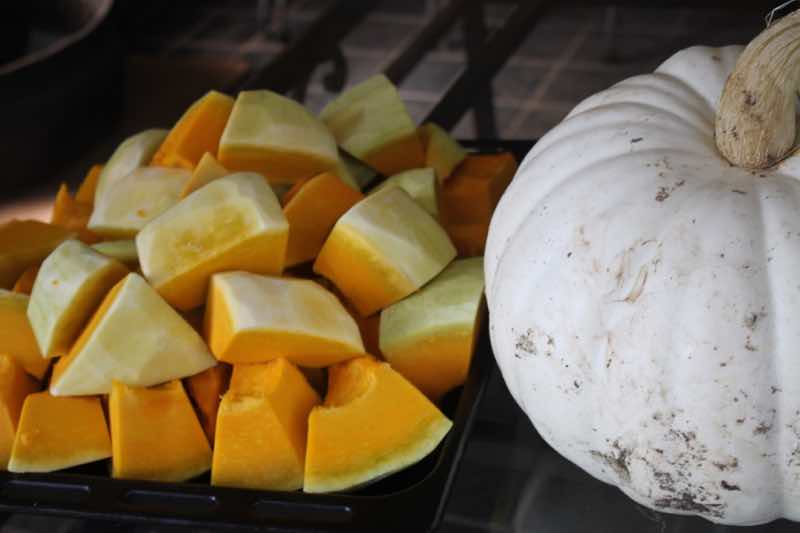 Pumpkin is also one of the oldest remedies for diabetes
Pumpkin is also one of the oldest remedies for diabetesWater for school gardens
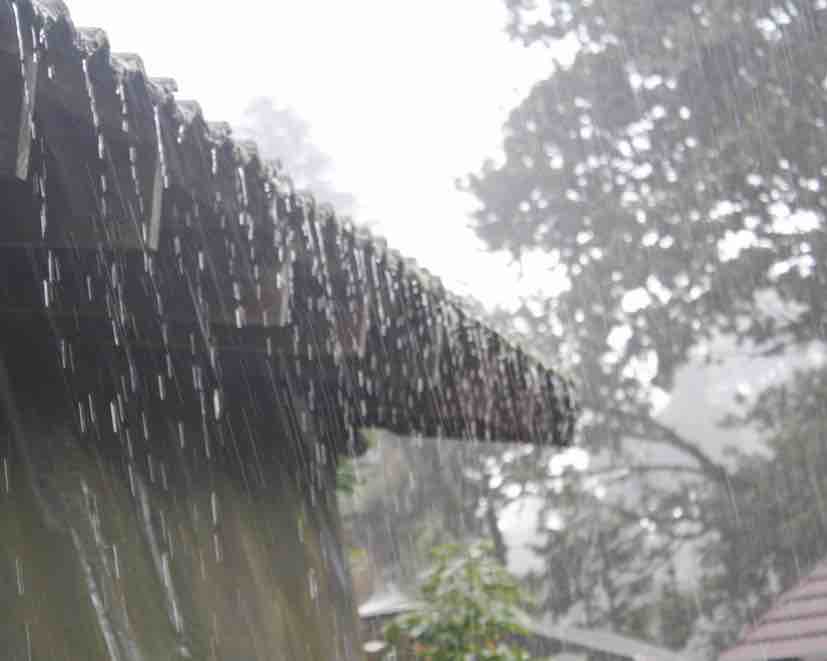 Plenty of water but how to harvest and store it?
Plenty of water but how to harvest and store it?Water is the great stumbling block to growing food. But we can do it. The first step to any garden is gutters on the rooves so that schools can harvest and store the rain; that the state must provide.
Without water you simply cannot grow vegetables year-round. Our experience is that three 5kL tanks go a long way to providing enough for a large vegetable garden.
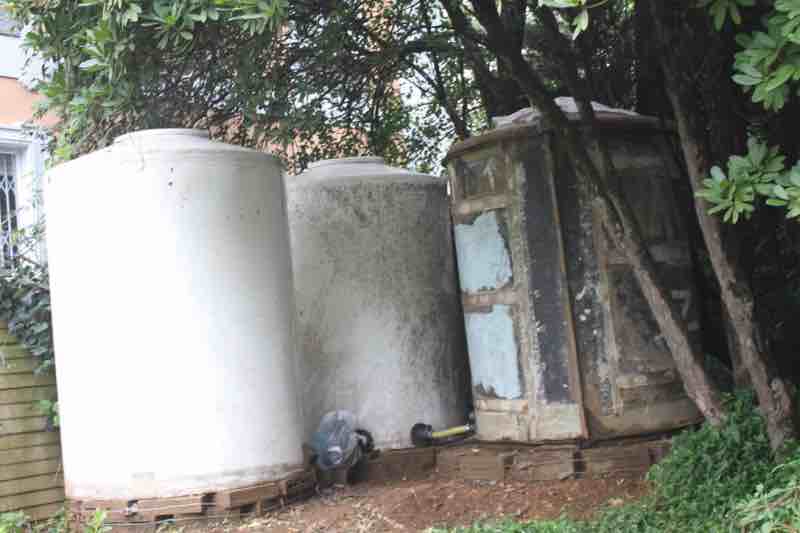
Extension officers
If I was in government I would start intensive short programmes for fully paid extension officers at agricultural colleges who would go out and teach the people these principles. Every school should have two or three hectares set apart for children to learn and do the work of growing their own food; taught to fish, so to speak, otherwise the fiscus will need billions every month indefinitely for handouts.
Heirloom seeds
Heirloom seeds are cheap to mass produce. Very soon every family would keep back a few dozen from their beans, maize and greens. None of this is rocket science. No child should be hungry, stunted or starving.
To kick start the programme, government should donate or sell seed at rock-bottom prices to schools and indigent people.
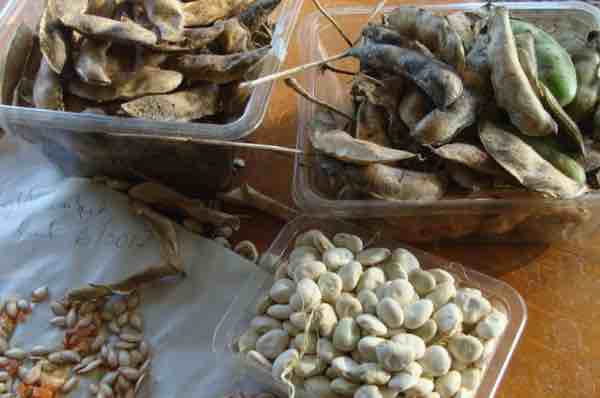 Lima bean and butternut seeds kept back for the next season
Lima bean and butternut seeds kept back for the next seasonLocal farmers
The fourth great challenge is probably the most difficult. To empower local farmers to contract to provide eggs, milk and wholegrain maize to schools; fresh mealies in season and greens too.
Real food, not the ultra-refined stuff that is imported from far and wide is available; nor the very expensive “food pastes” from Malawi. Are there no peanuts grown in SA?
It works
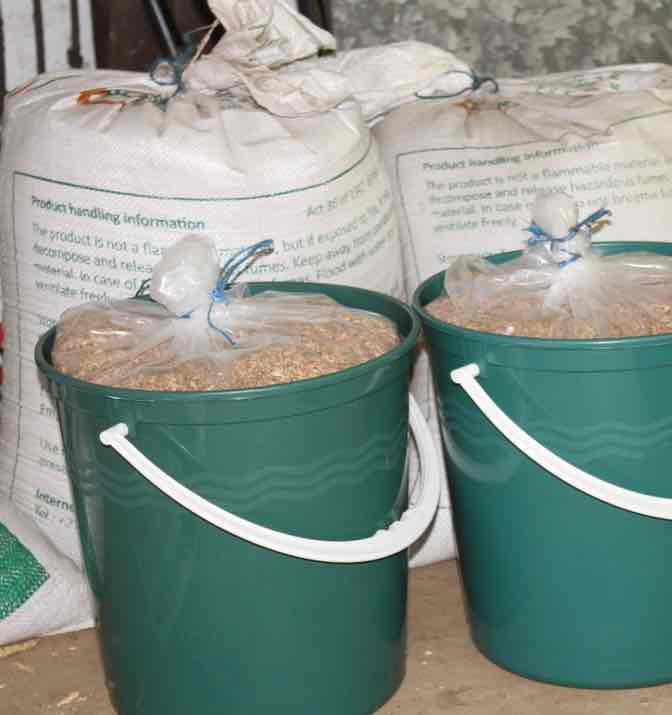 Storing grain in buckets
Storing grain in bucketsNone of this is theory. At our green home we do it all every day on about 1/2ha of land. We grow most of our own food, purchase wheat and maize directly from the farmer; and grind our own meal.
Homemade 100% wholegrain bread and maizemeal porridge are dirt cheap. We could keep a pig, rabbits and a milch goat too but one has only so much energy; but there’s no reason why others should not do it. We get more than enough protein from our own legumes and chickens.
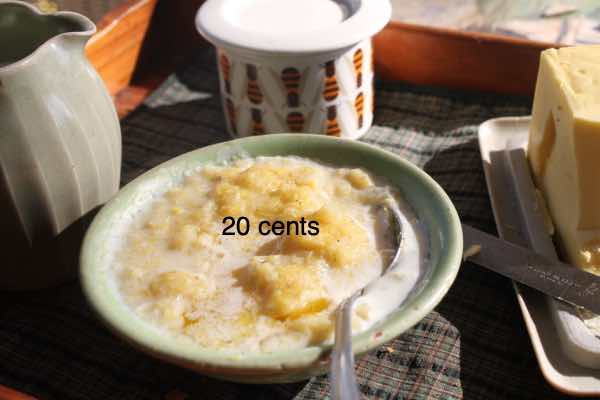 100% wholegrain maizemeal porridge is dirt cheap
100% wholegrain maizemeal porridge is dirt cheapOf course I acknowledge that we are privileged. There is a fence to stop the neighbour’s cows getting in and theft of all our hard work. We had the capital to build an underground reservoir to harvest ample rainwater. We can study the internet and learn from others how to grow “no dig potatoes,” the next project.
But how to replicate our green home in tens of thousands of indigent homes, in every school is quite beyond me. We have the vision but not the expertise to spread the good news; no family should go hungry. The poor do not have access to the Witness and the wealthy I fear are more interested in spending their time watching World Cup rugby, cricket and Wimbledon. I am not optimistic.
The real challenge is how to enable NGOs that will not give out gifts but empower the people to build their own sustainable lifestyles.
Government should convene a meeting of the dominant food players to forge an agreement towards a healthier nation,
That should include constraints on the advertising of unhealthy foods.
- Dr David Harrison, MD
Those "unhealthy foods" should include super-refined maizemeal, cake flour and sugar.
An intense awakening
Only 42% of children enrolled in early learning programmes (ELPs) in South Africa are developmentally on track for their age, according to the 2025 Thrive by Five Index.
Vukuzenzele is the new buzzword. In Zulu it means an intense awakening; figuratively speaking it commands South Africans to arise and do it themselves. Government is far too concerned about other more important things; stunting of our children does not concern them. But they are not ignorant of the problem; the president’s wife, an able doctor, has told them.
And big business is only in it to make a good profit. Almost no one in government really cares and understands about the stunting of our children; or has a solution.
Development Bank president Akinwumi Adesina is on record as saying that under-nutrition and stunting impact 216 million kids on our continent; and poor food is linked to nearly a half of child deaths. He pegs the economic cost of this calamity at 11% of Africa's GDP.
It’s time that South Africans woke up and started growing their own food; in school gardens and their own homes. Without a vision, the people perish.
Stunting story ponders what government could do
Stunting story ponders what government could do to restore the hungry to the pledge of our constitution.
- The stunting story has three elements
- Stunting story and severe food insecurity
- Stunting story weighs hunger versus malnutrition
- Stunting story recommends local mills for freshly-ground grains
- Stunting story suggests scenarios to restore harmony and balance
- Stunting story ponders what government could do
When browsing use right click and "Open Link in New Tab" or you may get a bad gateway signal.
Stunting story ponders what government could do; and what we should do. I personally believe that it is high time that the Church got on board. Currently there is deafening silence.
What exactly does "let the children come to me" imply in today's context?
Newsletter
Our newsletter is entitled "create a cyan zone" at your home, preserving both yourself and Mother Earth for future generations; and the family too, of course. We promise not to spam you with daily emails promoting various products. You may get an occasional nudge to buy one of my books.
Here are the back issues.
- Lifestyle and ideal body weight
- What are ultra-processed foods?
- Investing in long-term health
- Diseases from plastic exposure
- Intensive lifestyle management for obesity has limited value
- A world largely devoid of Parkinson's Disease
- The impact of friendly bacteria in the tum on the prevention of cancer
- There's a hole in the bucket
- Everyone is talking about weight loss drugs
- Pull the sweet tooth
- If you suffer from heartburn plant a susu
- Refined maize meal and stunting
- Should agriculture and industry get priority for water and electricity?
- Nature is calling
- Mill your own flour
- Bake your own sourdough bread
- Microplastics from our water
- Alternative types of water storage
- Wear your clothes out
- Comfort foods
- Create a bee-friendly environment
- Go to bed slightly hungry
- Keep bees
- Blue zone folk are religious
- Reduce plastic waste
- Family is important
- What can go in compost?
- Grow broad beans for longevity
- Harvest and store sunshine
- Blue zone exercise
- Harvest and store your rainwater
- Create a cyan zone at your home
Did you find this page interesting? How about forwarding it to a friendly book or food junkie? Better still, a social media tick would help.
- Bernard Preston homepage
- Stunting of children
- Stunting Story Ponders What Government Could Do
Address:
56 Groenekloof Rd,
Hilton, KZN
South Africa
Website:
https://www.bernard-preston.com